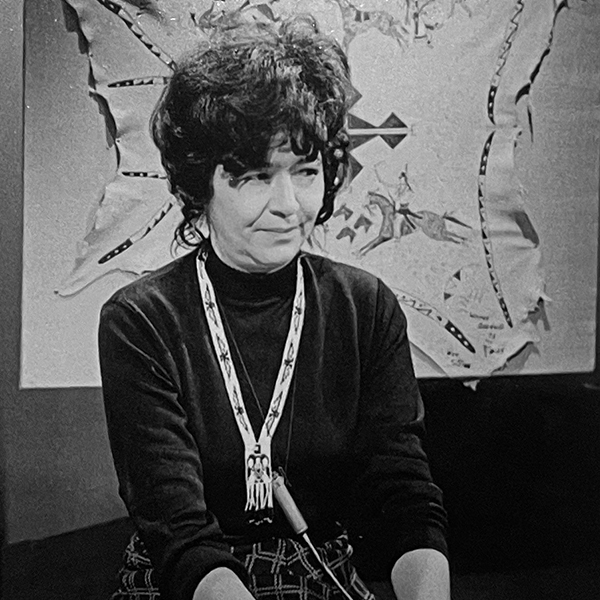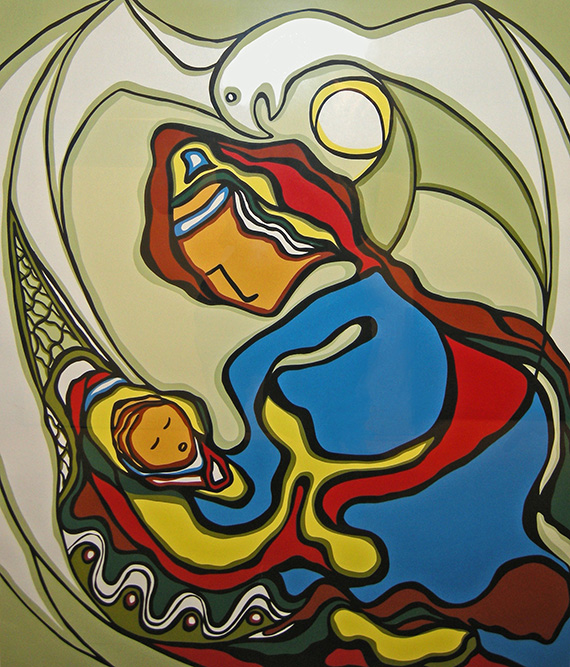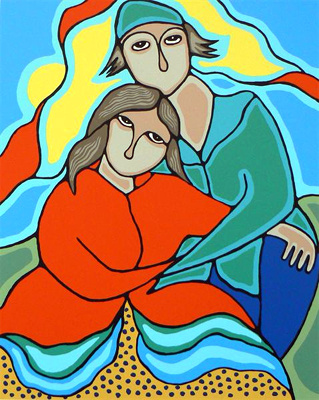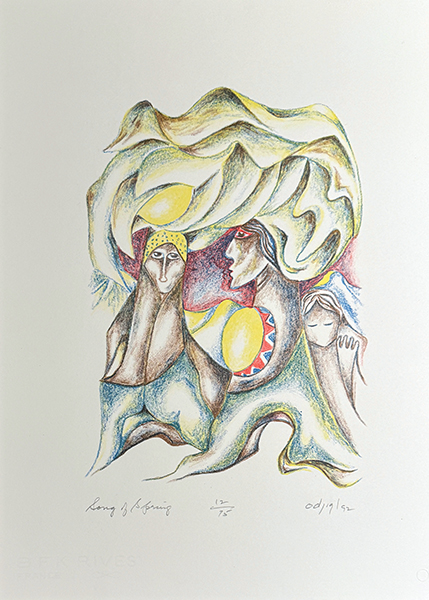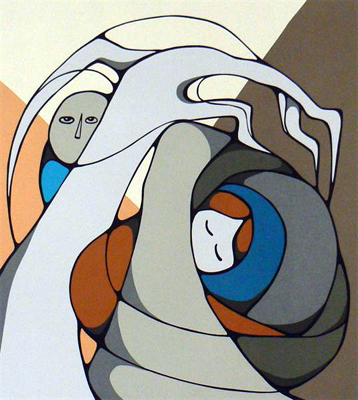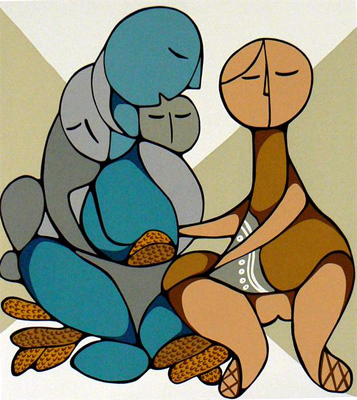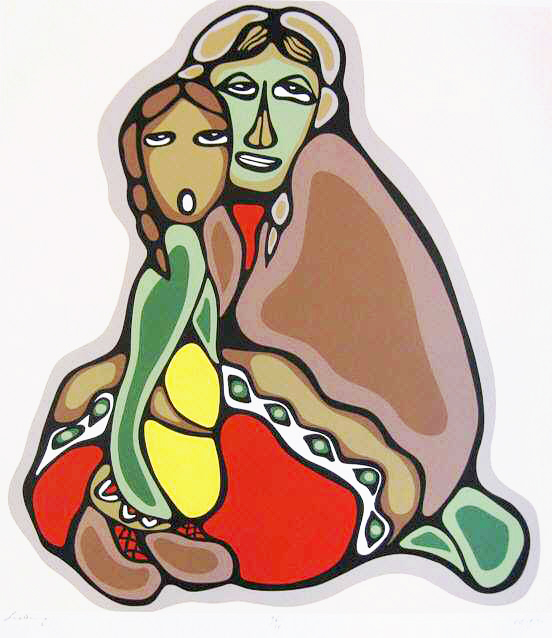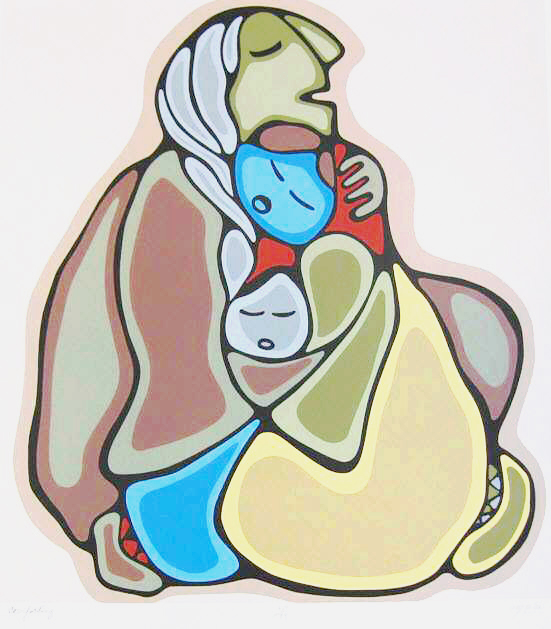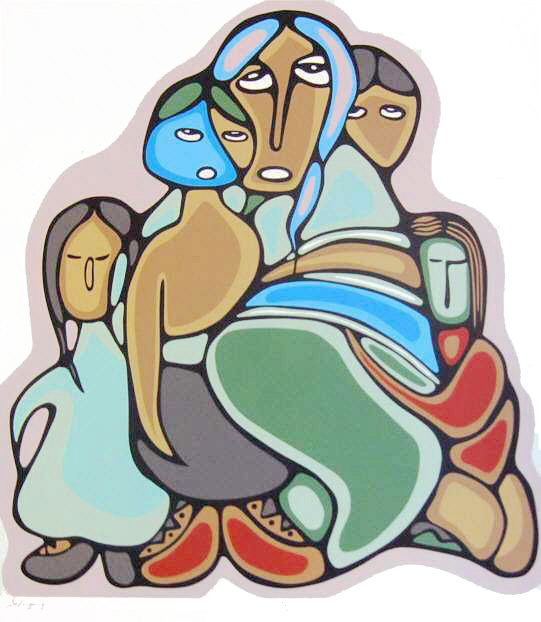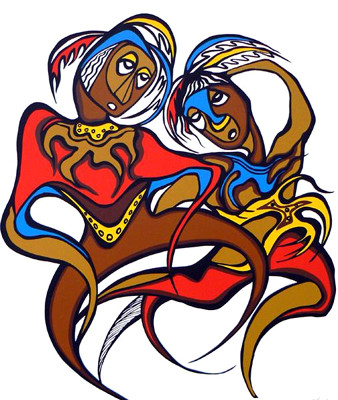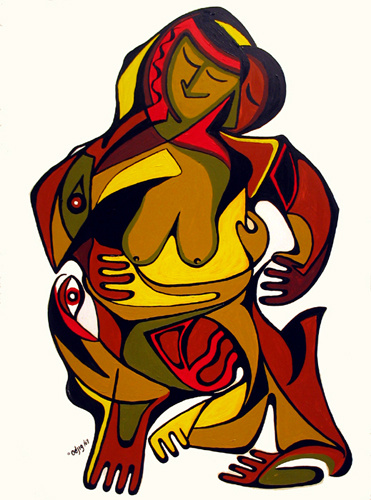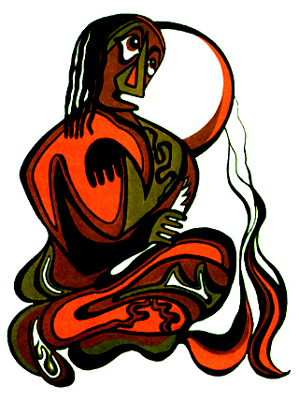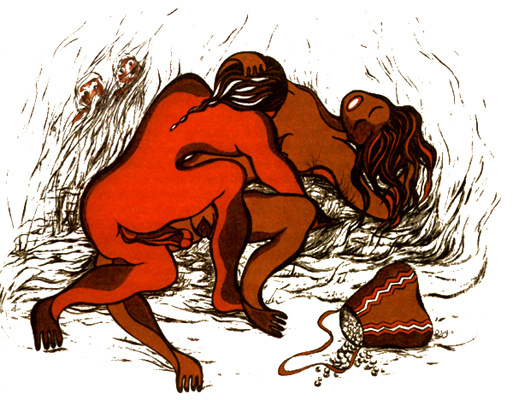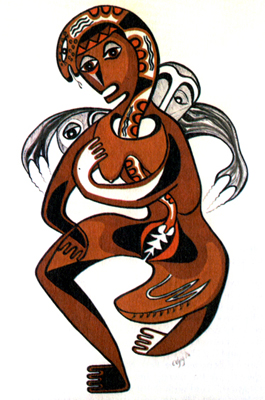Daphne Odjig (Limited Edition Prints)
Celebrated First Nations artist Daphne Odjig, known as the grandmother of Canadian Indigenous art, was born in 1919 on the Wikwemikong Reserve on Manitoulin Island. Her heritage is part Odawa, Potawatomi and English, which Odjig discovered as a child while on a sketching excursion with her tombstone-carver grandfather, Jonas. He taught her the legends of her ancestors and the use of the curvilinear design for which she has become revered.
Daphne Odjig was a self-taught artist who began painting and drawing at a young age however it wasn't until the 1960s that she began to professionally exhibit her work. At the time, she also felt it was important to instruct young Indigenous people about their heritage, just as her grandmother had done. She began to focus her art-making upon the legends, joys and political realities of Indigenous life while simultaneously refining her signature style of vibrant colours, soft contours outlined in black, overlapping shapes and modernist, abstracted figuration.
Daphne Odjig established the first Indigenous-run fine art print house in Winnipeg, Manitoba in 1971. Known as 'Odjig Indian Prints,' this print house was so successful that it evolved into a Contemporary Indigenous gallery space in 1974, called the New Warehouse Gallery, run by Odjig and her husband, Chester Beavon. She was one of the founding members of the first Canadian Native-run printmaking operation, the Canadian Professional Native Artist Association, colloquially known as the "Indian Group of Seven." This group consisted of Odjig, Norval Morrisseau, Carl Ray, Alex Janvier, Jackson Beardy, Eddy Cobinesss and Joseph Sanchez.
Daphne Odjig has received numerous awards include eight honorary doctorates, an appointment to the Order of Canada, election to the Royal Canadian Academy of Art and the 2007 Governor General's Award in Visual and Media Arts. In addition, she was presented with an Eagle Feather by Chief Wakageshig in 1978 on behalf of the Wikwemikong Reserve in recognition of her artistic accomplishments - an honour previously reserved for men to acknowledge prowess in hunt or war. Documentaries by the CBC, the National Film Board and Tokyo Television have been made about Daphne Odjig and she has completed commissions for Expo 1970 in Japan, the Royal Ontario Museum, and the twenty-seven foot mural at the Museum of Civilization entitled The Indian in Transition. In 1984, her works were featured in a group exhibition entitled: The Image Makers at the Art Gallery of Ontario. In 2007, a major retrospective exhibition, organized by the Art Gallery of Sudbury and the National Gallery of Canada, entitled The Drawings and Paintings of Daphne Odjig, A Retrospective Exhibition travelled across the country, including the McMichael Canadian Collection.
In 2011, Canada Post issued three stamps that celebrate her work and feature the paintings: Pow-wow Dancer, 1978, on the Canadian stamp, Pow-wow, 1969, on the US stamp and Spiritual Renewal, 1984, on the international stamp. Daphne Odjig passed away on October 1st, 2016 at the Cottonwoods Care Centre in Kelowna, B.C. at the age of 97. Her artwork is a testament to her outstanding contributions to Canadian art, which will continue to inspire others for generations to come.
